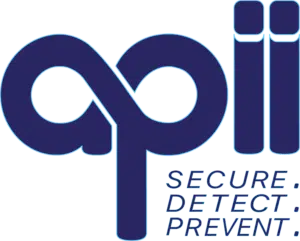The first case, on an elderly man at high risk of death, was performed in May without official Health Ministry approval on compassionate grounds. There have been two more cases since then.
Instead of performing open-heart surgery, with all its risks, to repair a defective aortal arch that has an aneurysm – a bulge in a blood vessel caused by a weakness in the blood vessel wall – interventional cardiologists at the Hadassah-University Medical Center in Jerusalem’s Ein Kerem are the first in Israel to fix it by minimal catheterization. The first case, on an elderly man at high risk of death, was performed in May without official Health Ministry approval on compassionate grounds. There have been two more cases since then. The fourth patient who underwent the two-and-a-half-hour procedure on Thursday, Meir Yitzhak of Kiryat Yam, is only 55. He was the first case in which the $32,000 implant was a commercial product recognized by the ministry and paid for by his health fund, Maccabi Health Services. It is threaded toward the heart via arteries in the leg and/or the arm and covers the balloon-like aneurysm in the aorta that then doesn’t have to be removed. Open-heart surgical repair of an aortic arch aneurysm takes six to eight hours, with a high risk, a long recovery and dangers of complications, said Dr. Gabby Elbaz-Greener, who performed the procedure along with coronary catheterization department head Dr. David Planer; Prof. Amnon Korah, a veteran Hadassah cardiac surgeon who has replaced damaged aortic arches in open-heart surgery; Prof. Ronen Be’eri, director of the echocardiography unit; and anesthesiology resident Dr. Tamer Abu Jreis. “About two out of 10 patients found to have an aneurysm in the aorta are unsuitable for the minimally invasive implant because of anatomical problems,” Elbaz-Greener told The Jerusalem Post in an interview. Before the catheterization, each patient undergoes a full clinical and imaging evaluation by the team in order to check suitability for the operation. Due to the complex geometric structure of the aortic arch, each patient is simulated on a 3D printed anatomical model. Fixing the arch is very complicated because three blood vessels are connected to it, she added. Aneurysms often rupture suddenly in patients of all ages, and nothing can save them – even if they are in a hospital when it occurs, said Elbaz-Greener. “It kills immediately. But we can often identify an aortic aneurysm when a scan has been performed for some other condition.” Hypertension is a risk factor for aortal aneurysms, but trauma and other problems can also cause it.From clinical trials to the operating room
SEVERAL HUNDRED patients in Europe and New Zealand underwent implantation of the delicate Dacron implant call Nexus – developed by the Endospan company in Herzliya Pituah – in clinical trials. It now has certification from the European CE authority after the product was deemed to meet EU safety and health requirements. Hadassah was chosen by the company to be the first here to use it because Planer was deeply involved in the graft’s development They published an article on the first catheterization procedure in the Annals of Surgery. Elbaz-Greener estimated that about 20 Israeli patients a year will need and be suited for the graft, and that the world market for it will include thousands of patients a year. As the graft becomes better known, many patients will demand it and cardiologists will learn to perform it because of the safety, short recuperation process and other benefits, she added. Doctors from Sheba Medical Center at Tel Hashomer have visited the Hadassah team to learn how to perform the special catheterization. Elbaz-Greener herself was an occupational therapy student at the age of 20 when – 29 years ago on the way to the Hebrew University of Jerusalem – she was a victim of a bus explosion carried out by Palestinian terrorists in Jerusalem’s Ramat Eshkol neighborhood. “My condition, with a damaged carotid artery, was so serious that my family members were asked if they were willing to donate my organs.” She miraculously survived and decided to switch her profession to become a doctor. She studied medicine at Ben-Gurion University of the Negev’s Faculty of Health Sciences in Beersheba and went to Toronto to learn catheterization as a specialty. Her post-traumatic symptoms as a result of her injuries have fortunately diminished. Hadassah Medical Organization director-general Prof. Yoram Weiss commented, “Today, cardiology patients receive excellent treatment here thanks to the accelerated development of treatments, which in the past we could only dream of. The treatment of aortic arch diseases is one of the most complex in modern medicine, when the treatment with open heart surgery – the only option until now – carries a high risk of mortality and brain damage. Several years ago, Endospan began developing a device for catheterization to reduce the risk of the operation, and we have seen amazing results.” Hadassah cardiology chief Prof. Ofer Amir added, “The aorta, especially its ascending part and the arch it creates in the thorax, is a therapeutic challenge because of the significance of a disruption in the blood flow in the main artery that supplies blood that leaves the heart to all the other organs of the body. Until today, a major operation involving the opening of the chest following a long recovery was the only treatment. Thanks to Israeli development and Hadassah’s skilled medical team, today it is possible to perform catheterization medical procedures on the aorta and avoid surgery.” Planer noted, “Beyond choosing the right patient and the high technical capacity of the team, in a procedure such as this, it is of utmost importance for us to work harmoniously, despite coming from different disciplines. Thankfully, the operation went smoothly and without complications. We are proud to be the first team in Israel to carry it out and pave the way for an additional therapeutic option for these seriously ill patients.” Read the full article here.
Tagged Breaking News





